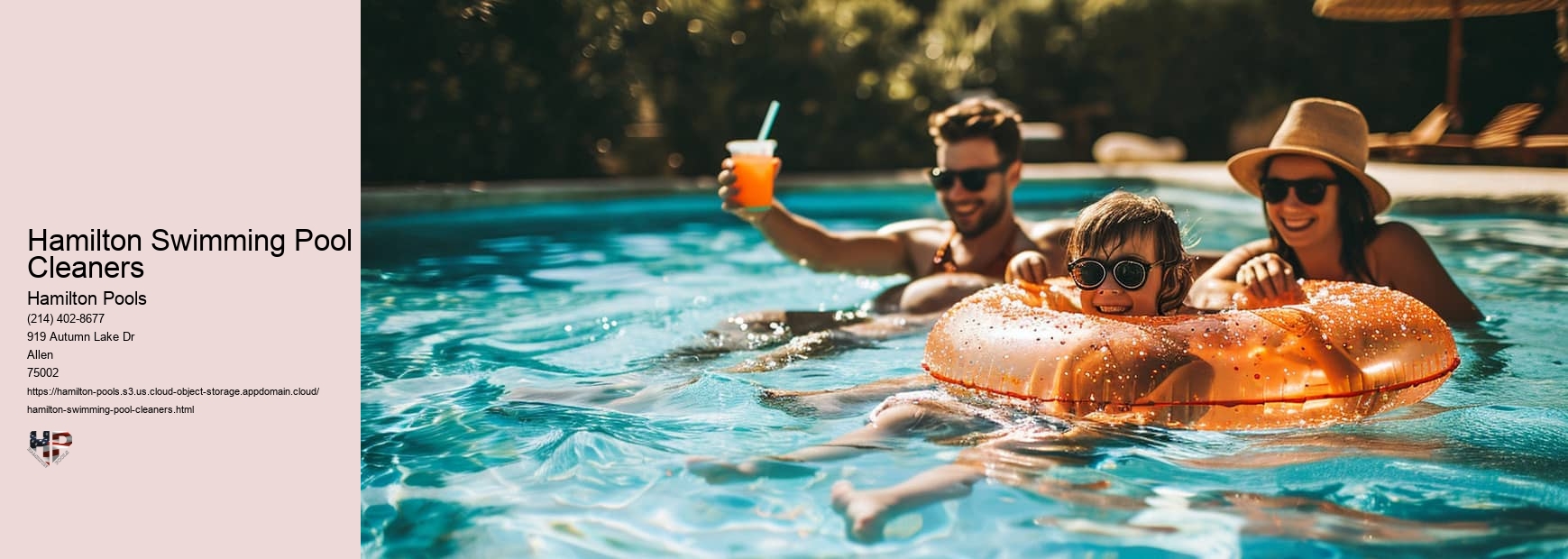
If you find that the salinity levels in your saltwater pool are too low or too high, you can adjust them accordingly. If the salinity is too low, you can add pool-grade salt to raise the levels. On the other hand, if the salinity is too high, you can dilute the water with fresh water. It's important to follow the manufacturer's instructions and consult a professional if you're unsure about the correct adjustments.
For a personalized approach to pool care, trust Hamilton Pools to provide tailored services that meet your specific needs and preferences. As experts in swimming pool maintenance, we understand that every pool is unique and requires individualized attention. Our comprehensive pool care services encompass everything from cleaning to repairs, ensuring that your pool remains in pristine condition.
At Hamilton Pools, we believe in providing our customers with valuable information and resources. That's why we offer service flyers that cover various pool care topics, including maintenance tips, troubleshooting advice, and information on how to prevent common pool problems. We want to empower our customers with the knowledge they need to keep their pools in excellent condition.
Hamilton PoolsDead algae needs removal, not killing. Vacuuming is the best way to capture settled algae debris. Consider flocculant to clump remaining particles before vacuuming for efficient removal. Maintain proper filtration and circulation to prevent future build-up!
Manual methods work surprisingly well! Skim debris before tackling the bottom. Use a pool brush to loosen dirt, then sweep it towards the deep end using a pool broom. Finally, manually scoop or net the accumulated dirt from the deep end. It's a workout, but effective!
Vinegar can help temporarily, but it's not a long-term solution for green pool problems. Its acidic nature might adjust pH slightly, but won't effectively kill algae responsible for the green color. Consider shocking the pool for proper algae control!
In swimming, '25' typically refers to the distance of one lap in a standard 25-meter pool. It can also signify the length of a particular drill or set within a workout.
Technically possible, but unlikely. UTIs usually stem from bacterial imbalances within the body. However, poorly maintained or heavily chlorinated pools can irritate skin and mucous membranes, potentially increasing susceptibility to infections. Maintain proper water balance and hygiene practices to minimize risks!
No drain the pain! Tackle it step-by-step. Remove large debris first. Shock heavily to kill algae and bacteria. Scrub walls and floor to loosen grime. Vacuum thoroughly to capture settled muck. Test and adjust water chemistry. Maintain routine cleaning and chemical balance to prevent future neglect!
Alternative sanitizers like mineral systems or ozone generators exist, but chlorine remains the most effective and widely used disinfectant. Consult a pool professional to explore options and ensure proper sanitation and safety if considering chlorine-free methods!
Chlorine alone won't solve a heavily dirty pool. First, remove large debris with a net. Skim the surface, then brush and sweep the bottom to loosen dirt. Vacuum to remove the loosened sediment. Only then add shock treatment followed by regular chlorine to maintain sanitation!